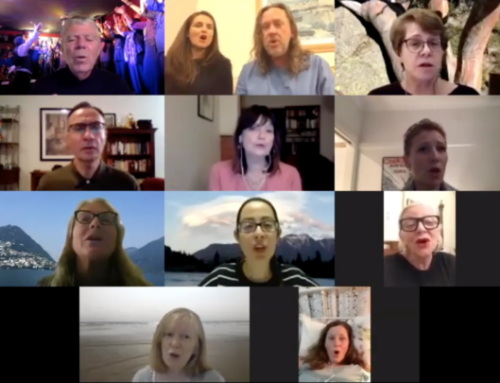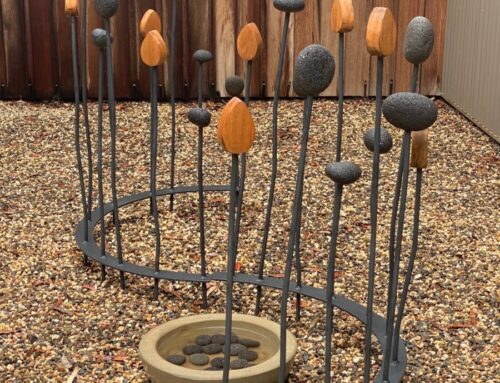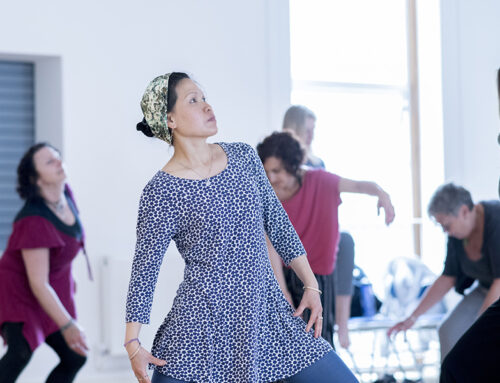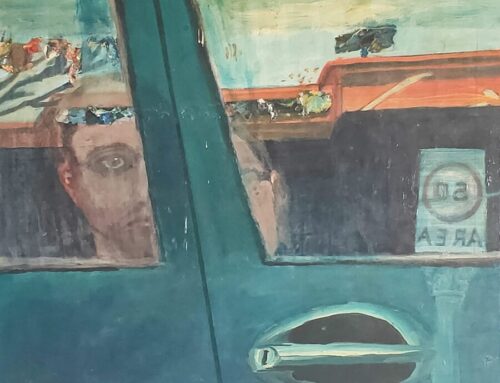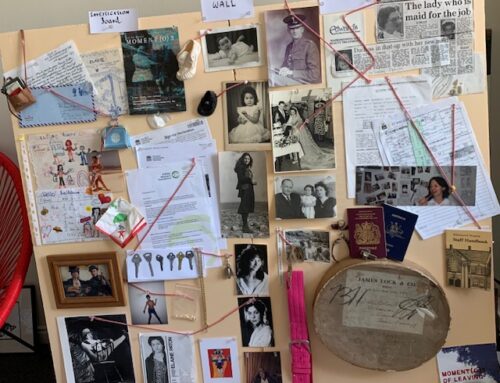Professor Liz Cameron is an artist who explores identity, cultural knowledges and healing through the human-nature connections. She is also Chair of Indigenous Knowledges in the School of Communications and Creative Arts, Faculty of Arts and Education at Deakin University.
‘Guwiyang the Lightening Fire Tree’ – the storyline is how an old tree takes on the form of lightning which glows at night within its stem and leaves. Guwiyang means fire and talks about the importance of Indigenous cultural burning that prevent uncontrollable wildfires and rejuvenates the earth surface for renewal. The tree represents lightning to remind us of caring for our Country – through fire burning practices that are essential for a healthy environment. Since Colonisation – we have ignored the inherent capabilities of thousands of years of practice in best ways to manage the land and seas. We have witnessed the devastation that has resulted from this. It is time to care for the needs of not only humans but the animals, plants and our unique cultural landscapes.
From an Indigenous perspective there is no language word for art. The word “bangawarra” in the Dharug language translates to “making” which is a more appropriate term as it expresses the true relationship of creative activities. Making is not only a practical action, but offers a deep connection between the maker and the viewer. However, I believe it is the process that is most prominent. The process of making builds my relationship with the work. As I tend to use multilayered approaches, this gives me time to contemplate and relate to each step. The work then starts to speak to me.
My works speak of the realities in life. I try to produce imagery that is healing – thus I work in a preventative space rather than reactive. It is my belief that art can assist in recovery – that art can help our emotions calm, so that we can reflect on ourselves and our past and present circumstances. The concept of making is beneficial to all people undergoing some sort of trauma – as it allows a space where verbal stories may be too difficult to speak. Hence visual stories can capture issues – even if they are only squiggles and markings – its all about what transpires within the making process.
At present we are being bombarded with news and stories that bring fear, frustration, and anguish. As people react in different ways, everyone is feeling confused, lost and vulnerable to some extent. While I feel I can adapt to this change of lifestyle, there are times when I struggle with various social aspects – worrying about others doing it harder than me. My work responds to these concerns – as I wish to pass on some peace and calmness.

Oolgna (2020), ink and acrylic
My work relates to building resilience and calmness. My work speaks about connecting to your true self and acknowledging past experiences. It talks about recovery and the importance of the Dharug Aboriginal seven senses as a way to understand and be in touch with self. Indigenous theories of the human senses consist of the external senses, which include seeing (vision), hearing (audition), tasting (gustation), smelling (olfaction), and touching (somatosensorial). The internal senses comprise of intuitive being (‘oolgna’) and imaginative knowing (‘ngara’). While there is a loss of meaning within the English translation, ‘oolgna’ is interpreted as felt gut sensations; a natural bodily alertness that generates deep, emotionally felt insight. “Ngara” refers to the imaginary, an ability to observe through a sense of curiosity that is deeply grounded within memory and dreams. These seven senses combined are perceived as guides of the emotional unconscious, and consciously felt vibrations that perpetrate cognitive thinking. Hence it is not the mind that drives creativity in practice but the deep connection we have with our body and the world around us.

Shifting Landscapes (2020), ink and acrylic
The external senses of seeing, hearing, tasting, smelling, and touching are a multi-unified combination, as each sense is interrelated to the other rather than being separate identities. Our senses provide a deep awareness of the past, present, and offer future guidance when we are truly connected. As a self-reflective process, these senses provide us with insight as “from feelings comes insight; from insight comes knowledge.” Insight cannot be achieved through logical mind-thought but is transmitted through the act of doing.
In times of distress, making is important to me in deconstructing my thoughts and actions. It enables me to reconnect more deeply with self to seek ways forward. The making effect – is a process of self-exploration – an important way to feel and express my feelings and pour out the hurt, anger or frustration.
My work encircles cultural themes of healing. It speaks about revitalisation and connecting to the land through the human-nature experience.
I would like people to understand when you look at an artwork, use all your senses to connect with it. What is it saying to you? What do you hear? What do you feel? I would like to get people to use their imaginative and intuitive senses to further their appreciations of how art connects with self.

Liz Belanjee Cameron
My creative making is greatly influenced by my life experiences. I have been touched by sadness and events that I have found emotional traumatic. I have found that making not only is a diversional activity but allows you to deconstruct your feelings and seek ways to recover. My work has changed over time and is always an evolving process. Recently my work has focused on the connection to nature through the emphasis of colour and form rather than distinctive shape.
I also seek out art by others as a way to inspire and learn.
More of Liz’s work can be found at www.Belanjee.com

